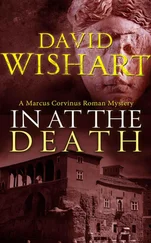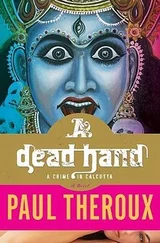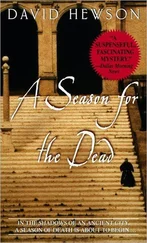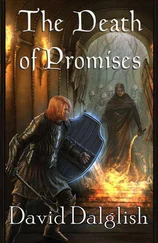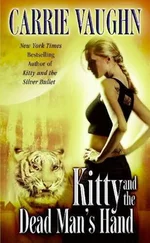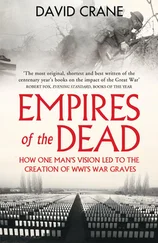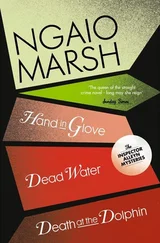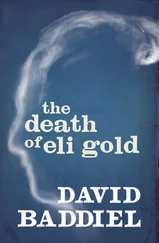29 Shultz, pp. 570–571.
30 Anatoly Dobrynin, In Confidence: Moscow’s Ambassador to America’s Six Cold War Presidents (New York: Times Books, 1995), p. 573.
31 Chernyaev diary, July 1, 1985.
32 English, p. 202.
33 Minutes of the Politburo, June 29, 1985. Volkogonov Collection, Library of Congress, Reel 18. TNSA.
34 Chernyaev diary, June 15, 1985.
35 Andrew and Gordievsky, Comrade Kryuchkov’s Instructions: Top Secret Files on KGB Foreign Operations, 1975–1985 (Stanford: Stanford University Press, 1991), pp. 107— 115.
36 Unless otherwise specified, this and other comments by Katayev on missile defense are from an undated monograph, “Kakoi byla reaktzia v SSSR na zayavlenia R. Reagana o razvertyvanii rabot v CShA po SOI,” or “What was the reaction of the Soviet Union to the announcement of R. Reagan on the deployment of works in the United States on the SDI,” twelve pages, Katayev, Hoover.
37 Katayev. The author is indebted to Pavel Podvig for identifying and explaining this.
38 Konstantin Lantratov, “The Star Wars Which Never Was,” January 1995. See www.buran.ru/htm/str163.htm .
39 Roald Z. Sagdeev, The Making of a Soviet Scientist (New York: John Wiley & Sons, 1994), p. 273.
40 Velikhov, interviews by author.
41 Called “IS,” this system was developed in the 1960s and tested in the 1970s and early 1980s, but Andropov’s 1983 moratorium seems to have marked the end of active use. See www.russianspaceweb.com/is.html .
42 A ruby laser emits energy in the visible (red) region.
43 P. V. Zarubin, “Academician Basov, high-powered lasers and the anti-missile defence problem,” Quantum Electronics , No. 32, 2002, pp. 1048–1064.
44 Velikhov described a similar project, known as Gamma, which he said never got off the ground.
45 The declaration was Sept. 24, 1982. Velikhov was also editor of The Night After… Climatic and Biological Consequences of a Nuclear War (Moscow: Mir Publishers, 1985).
46 The group was the Soviet Scientists’ Committee for the Defense of Peace Against the Nuclear Threat.
47 Velikhov said the 1983 report remains secret. But some parts are evident in: Yevgeny Velikhov, Roald Sagdeev, Andrei Kokoshin, eds., Weaponry in Space: The Dilemma of Security (Moscow: Mir, 1986).
48 The chart showing thirty-eight warheads is from Katayev, Hoover. Other data on the SS-18 is from Podvig, Russian Strategic Nuclear Forces (Cambridge: MIT Press, 2001), pp. 218–219. See “Multiple (as in ‘up top 38’) warheads,” http://russianforces.org . For the U.S. expectations of asymmetric response, see “Possible Soviet Responses to the US Strategic Defense Initiative,” NIC M 83-10017, Sept. 12, 1983, Director of Central Intelligence.
49 Gorbachev interview, June 30, 2006.
50 Nichols, p. 133.
51 Chernyaev diary, Sept. 1, 1985.
52 Reagan diary, Sept. 10, 1985.
53 Reagan diary, Oct. 22, 1985. Shultz said the Soviet offer September 27 was heavily weighted against the United States in the way it was structured. Shultz, pp. 576–577.
54 Soviet Military Power , April 1985, p. 55.
55 Robert C. McFarlane, with Zofia Smardz, Special Trust (New York: Cadell & Davis, 1994), pp. 307–308. Matlock, p. 133.
56 Reagan diary, Sept. 26, 1985.
57 Robert M. Gates, From the Shadows: The Ultimate Insider’s Story of Five Presidents and How They Won the Cold War (New York: Simon & Schuster, 1996), p. 342.
58 Shultz disagreed with this view. Shultz, p. 586.
59 Gates, p. 343. The Soviet outlook wasn’t very ambitious either. Moscow “did not pin great hopes on the summit,” Dobrynin said, p. 586. Chernyaev recalls the thrust was not to deviate from existing positions on arms control, “not to get worked up” over regional conflicts, and “in a word, not to provoke Reagan in order not to intensify the threat, not to play up to the hawks.” Chernyaev diary, Nov. 12, 1985. Gorbachev had leeway to go beyond these guidelines, and he did.
60 Gates, p. 343. NIE 11-18-85, Nov. 1, 1985.
61 Reagan diary, Nov. 13, 1985.
62 Suzanne Massie, interview for the television documentary The Cold War , Sept. 2, 1997, Liddell Hart Center for Military Archives, Kings College, London.
63 Matlock, pp. 150–154 and Jack F. Matlock, Jr., Superpower Illusions (New Haven: Yale University Press, 2010) p. 317, note 11.
64 Yegor Gaidar, “The Soviet Collapse: Grain and Oil,” American Enterprise Institute for Public Policy Research, April 2007. Also see Gaidar’s Collapse of an Empire: Lessons for Modern Russia (Washington, D.C.: Brookings Institution Press, 2007).
65 Shultz, pp. 589–596. McFarlane, pp. 314–316. Oberdorfer, who covered the trip for the Washington Post , reports that Gorbachev said he would be willing to reduce existing nuclear weapons to zero on condition the two sides stopped the “militarization of space,” Don Oberdorfer, From the Cold War to a New Era (Baltimore: Johns Hopkins University Press, 1998), p. 137.
66 Reagan diary, Nov. 5, 1985.
67 Reagan diary, Nov. 6, 1985.
68 Reagan, An American Life , p. 632.
69 Sagdeev, pp. 268–269.
70 Gates, p. 358.
71 Matlock, pp. 134–135, 158.
72 Oberdorfer, p. 143.
73 Reagan, An American Life , p. 635.
74 This account of the summit meetings is based on the official U.S. minutes, unless otherwise specified.
75 Gorbachev, p. 406.
76 Reagan diary, Nov. 19, 1985.
77 Reagan, An American Life , p. 636.
78 Gorbachev, p. 408.
79 Dobrynin recalls that this agreement for reciprocal visits was precooked quietly by him, p. 589. Reagan had also envisioned meeting again. Matlock, p. 153.
80 Lou Cannon, Ronald Reagan: The Role of a Lifetime (New York: Simon & Schuster, 1991), p. 754. In his memoir, Larry Speakes, the White House spokesman then, rendered the quotation slightly differently. In Speaking Out: Inside the Reagan White House (New York: Charles Scribner’s Sons, 1988), p. 138. Speakes quoted Reagan: “I bet the hardliners in both our countries are squirming.”
81 Reagan said it before the Japanese Diet, Nov. 11, 1983, and in his annual address to the United Nations General Assembly in 1984. In an exchange of letters before Geneva, Reagan and Gorbachev had also discussed including this language in their concluding summit statement.
82 “Exchange of Televised Addresses by President Reagan and Soviet General Secretary Gorbachev,” Public Papers of the Presidents, 1985 Pub. Papers 4, Jan. 1, 1986.
CHAPTER 11: THE ROAD TO REYKJAVIK
1 Nikolai Chervov, Yaderny Krugovorot [Nuclear Continuum] (Moscow: Olma-Press, 2001).
2 Valery Boldin, Ten Years That Shook the World: The Gorbachev Era as Witnessed by His Chief of Staff (New York: Basic Books, 1994), p. 115.
3 Akhromeyev’s views are from his memoir with Georgi M. Kornienko. Akhromeyev kept the proposal outside normal interagency channels for arms control proposals, where it most certainly would have been stopped. The proposal definitely had a strong propaganda value, and Gorbachev acknowledges in Memoirs that he announced it before the forthcoming Party Congress for maximum impact. But the author believes that Akhromeyev and Gorbachev also believed in the goals of the proposal, and felt the nuclear danger was real. So, from their perspective, it was not just an artificial statement without meaning, as in the past.
4 There are differing accounts about the origins of the initiative, although most credit Akhromeyev. Gorbachev has said he and Shevardnadze had talked about it soon after Shevardnadze’s appointment. Savelyev and Detinov also say it came from the General Staff and defense ministry. Akhromeyev says he shared the military’s draft with Kornienko at the Foreign Ministry. In the author’s possession is a copy of the color chart used to explain the plan at a press conference in Moscow on Jan. 18, 1986. On the back is written, in hand, that the plan was brought into being and edited by Akhromeyev. Katayev, Hoover.
Читать дальше

